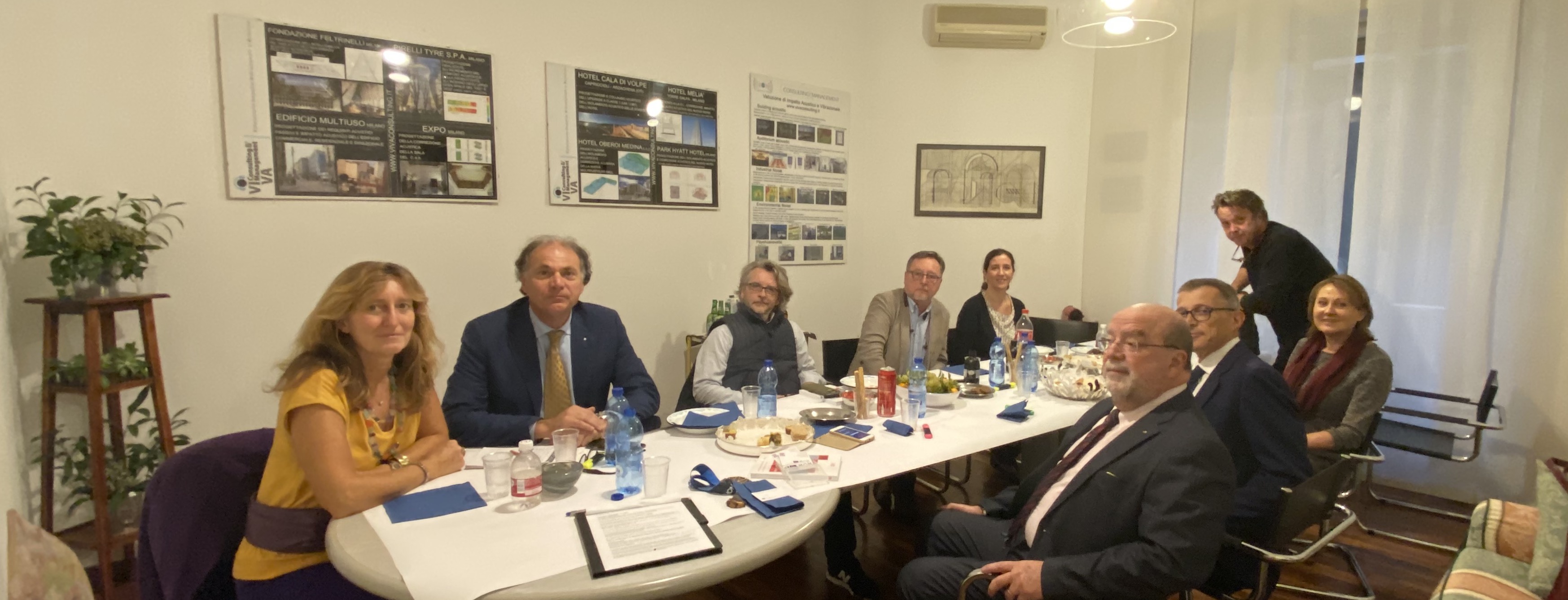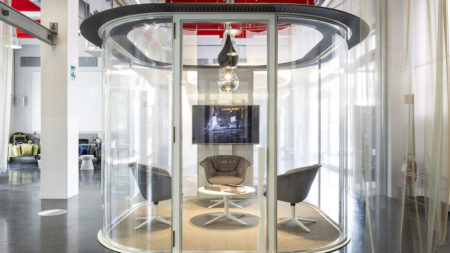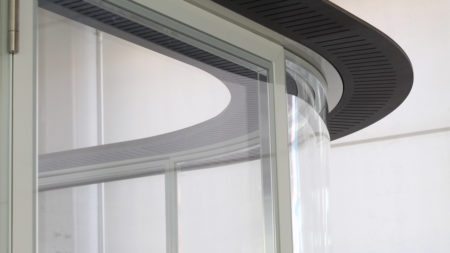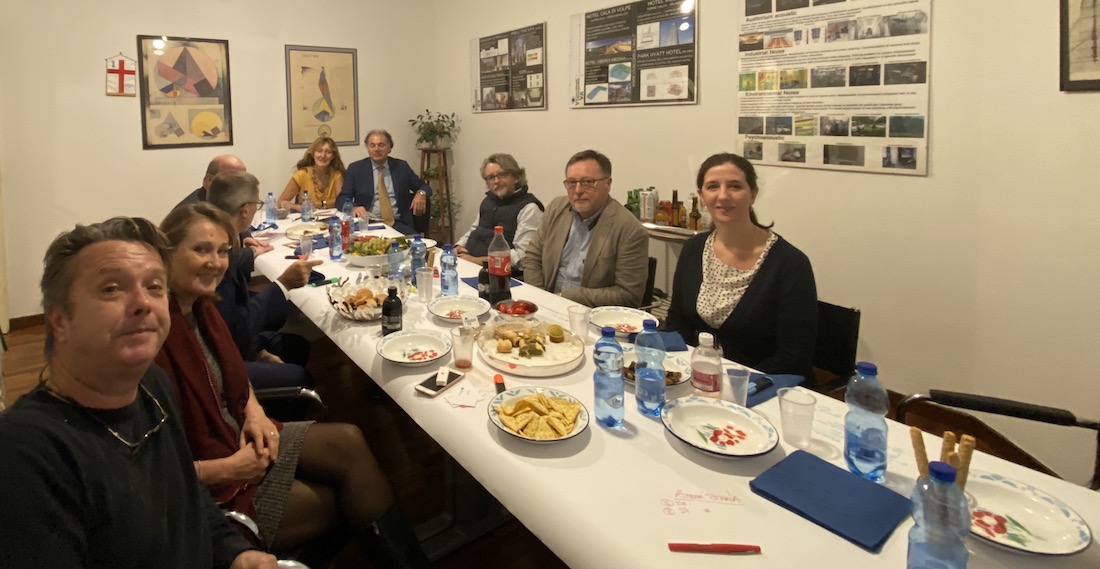
A convivial atmosphere and high-level professional experiences characterized the second Learn & Lunch on acoustic comfort in the workplace, organized with the expert Ezio Rendina, founder of V.I.V.A. Consulting.
A sharing of ideas that raised questions and suggested constructive input, while the acoustic engineer, responding to the main problems, offered extremely innovative approaches and solutions.
How important is acoustic comfort in the workplace? What are the main sources of discomfort in your own workplace? What solutions did you adopt?
This Learn & Lunch starts from one’s personal experience, too; from the subjective experience of each professionals around the lunch table, writing notes and answers on the “tablecloth-blackboard”.
All them confirm its importance but some of them are not satisfied with the level of acoustic comfort inside their own open plan office. And the main sources of discomfort are the same complained by customers.
The open plan typology guarantees flexibility, space optimization saving money… but considering that the main cost of a company – almost 90% – consists of the employees, the saving is only apparent: several studies demonstrate that the brain subject to noise has concentration difficulties with a drop in performance. And it takes 23 minutes to regain the concentration lost due to noise or other external factors.

The main causes of acoustic discomfort.
Phone calls are the chief “culprits”: a too high tone of voice adopted by speaking in a work environment shared with others. Instead, the buzz of those who work around is not annoying and perceived as a sign of stimulating activity.
The remedies?
First of all education, changing habits, not shouting … Traditional solutions are insulation to delimit and absorption to avoid acoustic reverberation.
Only a few people have the privilege of an individual closed office, so someone suggests acoustic headphones to listen to music, others recommend background music to generate pleasant background noise. On these aspects the points of view differ.
Someone disapproves headphones in workplace created to encourage collaboration. Some others think the music itself is a source of distraction.
Soundproofing seems to be the passepartout for every acoustic problem and designers often ask to sound absorbing panel suppliers the “acoustic project” for free.
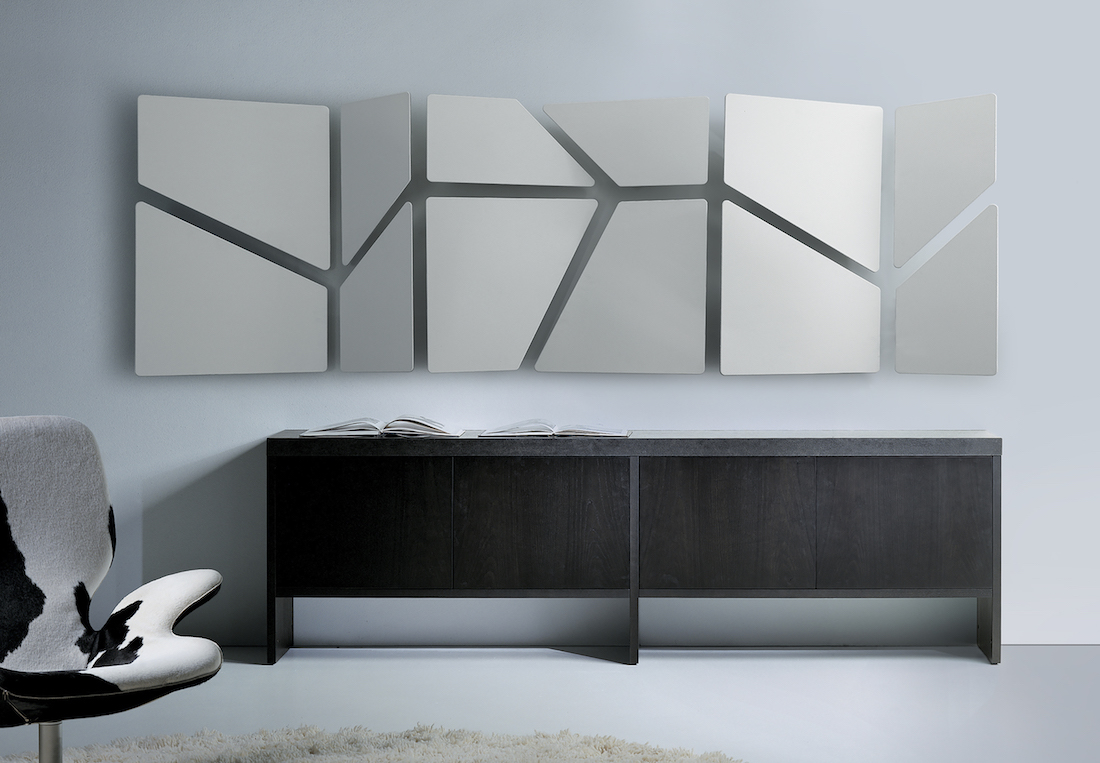
Designing the reverberation time.
The point of view of Rendina shifts the perspective from the subjective points of view to the objective evidence of science.
Not the voice, but the content of the conversations cause disturbance because the brain automatically “tunes” itself to certain words of interest to us.
And only the sound-absorbing panels are not a solution because at most you will get a 3-6 dB drop.
So the acoustic engineer studies the environment, the shape of the room and looks for the optimal sound absorption curve, before lowering the reverberation on all frequencies by default.
It is surprising that the results can be much higher by increasing the reverberation time on speech frequencies because it creates a buzz that does not disturb.
On the contrary, background music, sound masking technologies or “natural” noises such as water do not give the same result because they introduce sound pressure and people automatically raise their voices.
Daniele Andriolo, however, cites some studies and the positive experience of Plantronics’ Habitat Sundscaping system.
In other words, acoustic engineering can counteract neuroscience and the positive impact of biophilia on people’s wellbeing.
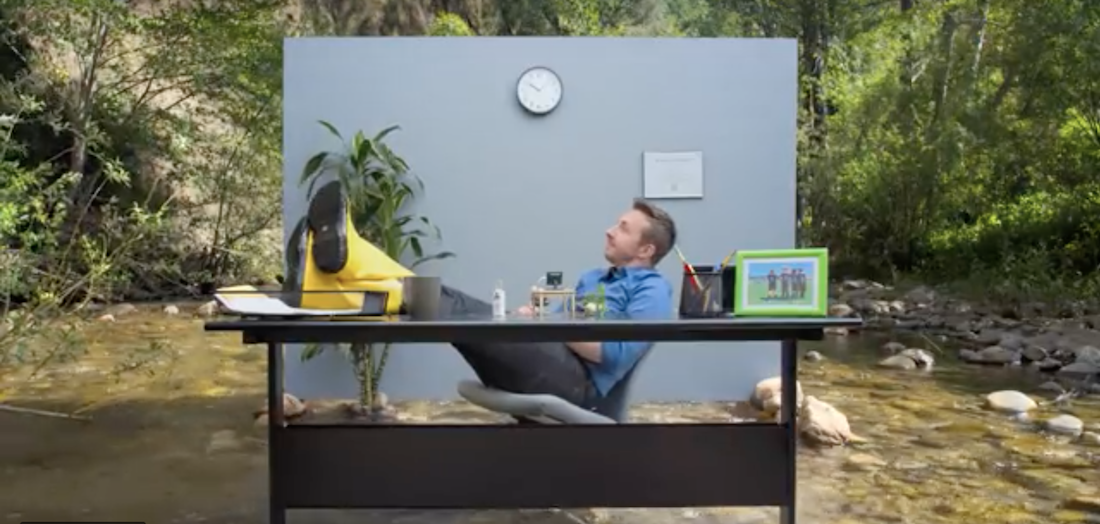
Other “architectural” solutions.
The acoustic project should be integrated into the architectural project: using sound-absorbing ceilings and textile flooring and designing more flexible environments equipped with phone booths and office pods. However, these solutions have a significant impact on the budget.
Giuseppe Tortato suggests to use cheaper building materials that integrate different functions, for example panels – which look like concrete, tied with wood fiber – that should not be painted and have good acoustic and thermal performances.
However, Marco Predari explains that there are cheaper office pods without upper closure which, thanks to an invention by the engineer Rendina – the sound diffractor – enable excellent acoustic results to be obtained.
What is the sound diffractor and how does it work?
Ezio Rendina explains that the idea came from the noise barriers used in Japan in the 1970s. The solution adopted takes advantage by the sound pressure accumulates that rises along the sound-reflecting wall of the Office Pod.
When the pressure reaches the top it is blocked by the diffractor, a sort of frame that reduces the passing of the sound wave on the walls of the open Office Pod.
From tests carried out on the same Pod with and without a diffractor, a gain of +5 dB was obtained on the increase in the acoustic insulation produced by this solution.
Questions and answers continue until the end of the lunch and suggest that, apart from the banalities, still many aspects of acoustics deserve to be addressed and wait for new solutions and professional innovative approaches.
Report by Renata Sias
Thanks to eng. Ezio Rendina and the professionals who attended the Learn & Lunch Acoustics # 2:
dr.Daniele Andriolo, Facilities + Project manager
eng Alberto Ariatta, Ariatta
eng Cecilia Bottaro, Design International
arch Lucilla Magliulo, LMA Design Network
arch Marco Predari, Universal Selecta
arch Marina Rigolone
arch André Straja, GAS Studio
arch Giuseppe Tortato, Studio Architettura Tortato
eng Francesca Vagliani, Covivio

